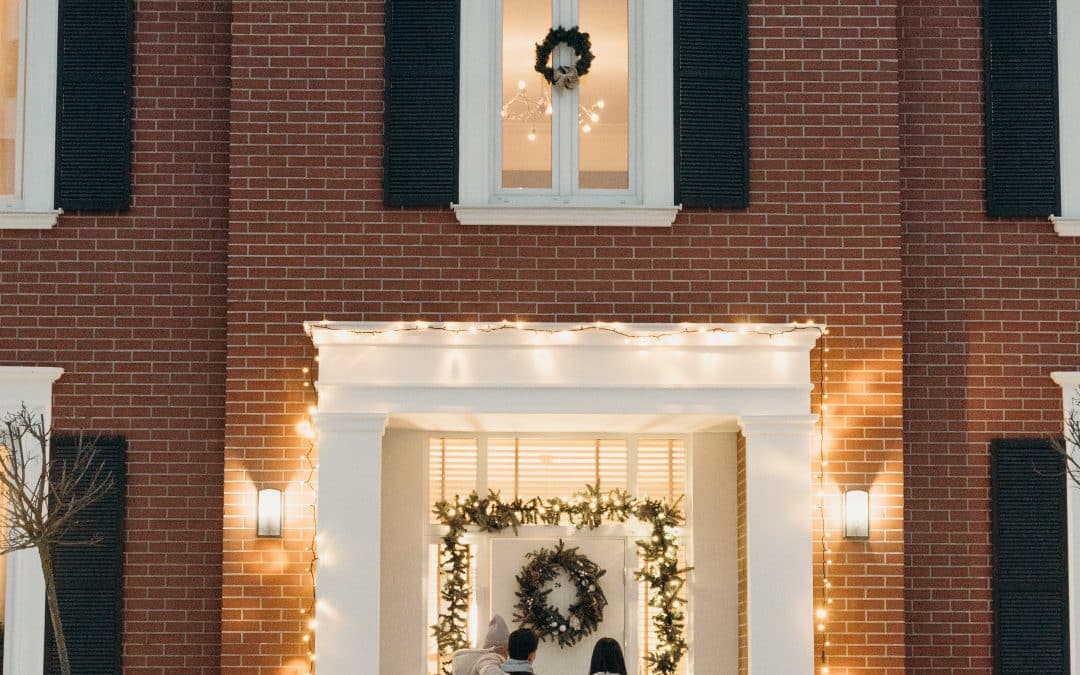The 2 main reasons your doorknob frosts.
-
Doorknobs don’t have any thermal break.
A thermal break is the insulation between the inside and outside. However, due to the moving metal components of doorknobs, there isn’t any space for insulation. If the hardware gets cold enough on the outside, it eventually gets cold inside through the process of thermal transfer. The warm, humid air in our homes interacts with this chilly surface creating condensation and frost on the hardware.
-
New doors and windows create tighter seals.
When we install new windows and doors, we create a tighter seal on the house with spray foam insulation and high-quality weatherstripping; this increases the negative pressure inside the house, and air from the outside will try to find the path of least resistance. In this case, that path tends to be around the door hardware. Frost can accumulate where the cold air is being pulled in around the door hardware, as there is little insulation in those areas.
You can prevent frost build-up with these easy steps!
With these easy steps, you can eliminate the issue. If your frosty doorknob doesn’t improve within 24 hours, give us a call –– we can come out to take a closer look.
-
Most new homes have an air exchange system in the house––check to see if it is on.
If you don’t have an air exchange system, turning on an externally-vented kitchen fan or bathroom fan will also help. This will replace the stale, humid air with fresh air from outside the house and balance out the negative pressure inside the house.
-
Purchase a Hygrometer
If you’re using a humidifier regularly, you may benefit from monitoring the relative humidity (RH) in your home. Sometimes our homes can become excessively humid, which isn’t good for us or our doorknobs! Window and door manufacturers recommend relative humidity levels in your home based on the following table:
| Outside Air Temperature (in Celsius) | Recommended Relative Humidity with Inside Temperature of 20 degrees Celsius |
| -30 or below | 15% |
| -30 to -24 | 15% to 20% |
| -24 to -18 | 20% to 25% |
| -18 to -12 | 25% to 30% |
| -12 to -6 | 30% to 35% |
| -6 to 0 | 35% to 40% |
Time for new Durabuilt windows and doors?
If you have older windows and doors and experience excessive frost build up in the winter months, this might mean that you need to replace your doors and windows or repair weather stripping. We work exclusively with Durabuilt to guarantee quality, everytime.
Whether you’re in Saskatoon or Prince George and just about anywhere in between, we can get you seeing clearly. Read our blog on how to assess your windows and doors visually. Check around the door to ensure there is no damage, and give us a call to schedule a free estimate today!
Locally built, family owned, & the know-how to keep you cozy!
Living in the western Canada, our climate is a unique challenge. Together we can navigate the winters with locally built windows and doors that are expertly installed. If you have any questions or want to upgrade your existing doors and windows, we are here for you with prairie-made Durabuilt products and the technical skill you need to keep your home warm.


This doesn’t solve our problem since its the door knob in the garage door
I have the same problem in my garage.